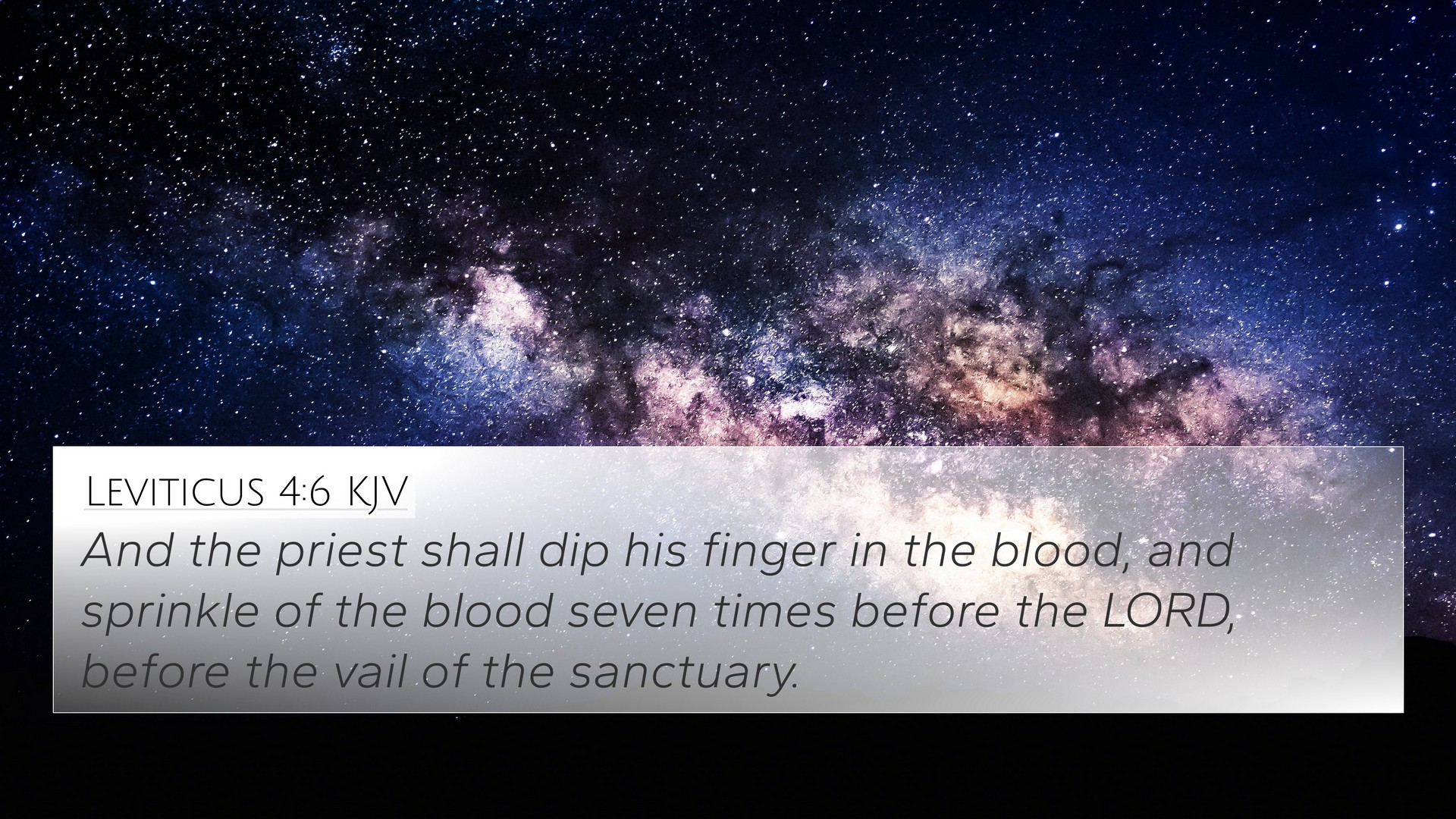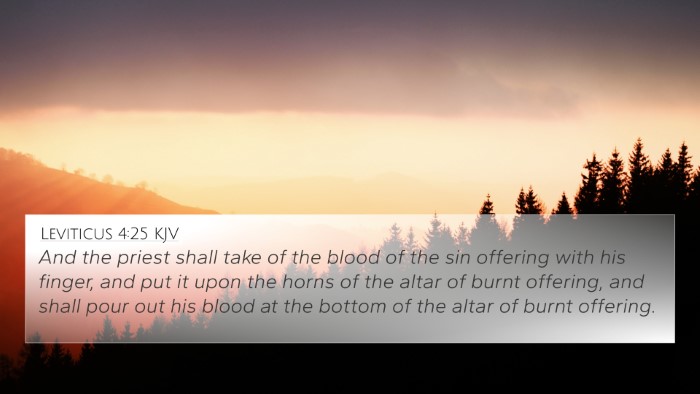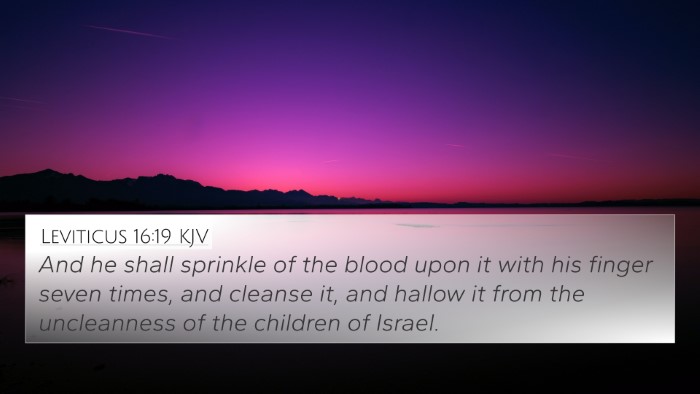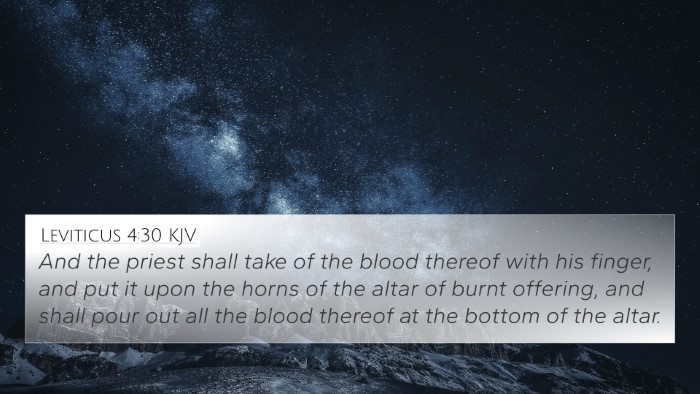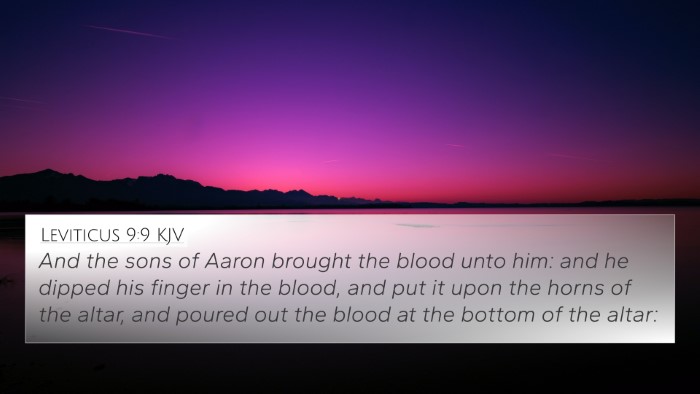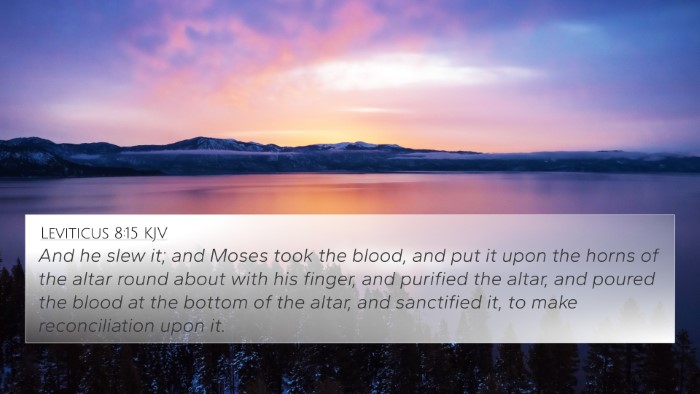Understanding Leviticus 4:6
Leviticus 4:6 states: "And the priest shall dip his finger in the blood, and sprinkle of the blood seven times before the Lord, before the veil of the sanctuary."
Meaning and Interpretation
The verse Leviticus 4:6 is situated within the context of the sacrificial system established in the Mosaic Law. This specific instruction refers to the ritual that the priest must perform when atoning for an unintentional sin committed by the community or the leaders of Israel.
- Priestly Role: The priest acts as an intermediary between God and the people, emphasizing the importance of the priesthood in facilitating reconciliation.
- The Symbolism of Blood: Blood in the Scriptures signifies life and atonement. As noted by Matthew Henry, this bloodshed represents the seriousness of sin and the costs associated with redemption.
- Seven Sprinkles: The act of sprinkling the blood seven times signifies completeness and perfection in the sacrificial atonement, as highlighted by Albert Barnes.
- Veil of the Sanctuary: Sprinkling before the veil indicates access to God's presence through the sacrificial system, which points to Christ's ultimate sacrifice that grants believers direct access to God.
Connecting Biblical Themes
The themes of atonement and sacrifice in Leviticus 4:6 resonate with various other passages across the Bible that inform and enrich our understanding of grace, sin, and redemption.
- Hebrews 9:22: "Without the shedding of blood, there is no remission of sins." This verse reinforces the necessity of blood for atonement, correlating with the actions described in Leviticus.
- Exodus 12:7: The Passover sacrifice also involved the blood of a lamb, paralleling the significance of blood in salvation and deliverance.
- Romans 3:25: Paul speaks of Jesus as a propitiation through faith in His blood, showing continuity in the theme of sacrifice.
- 1 Peter 1:18-19: These verses remind us that Christ, the Lamb without blemish, fulfills the sacrificial system contained within Leviticus.
- Isaiah 53:5: Prophecy regarding the suffering servant emphasizes the role of His wounds for healing, linking prophetic literature to the sacrificial principle.
- Colossians 1:20: The idea of reconciliation through blood ties into the New Testament’s fulfillment of the Old Testament sacrificial system.
- Psalm 51:7: This Psalm illustrates the cry for purification and the acknowledgment of sin, aligning with the need for atonement seen in Leviticus.
Tools for Bible Cross-Referencing
To study Leviticus 4:6 deeply, one can use various tools and resources for cross-referencing, enabling a better understanding of its implications:
- Bible Concordance: An essential resource for locating specific verses and their related references.
- Cross-Reference Bible Study: Engaging in a study that utilizes various translations and scholarly input on the texts informs comprehension.
- Bible Reference Resources: These include study Bibles that offer insights and connections between verses.
- Bible Cross-Reference System: Many Bibles are equipped with built-in cross-reference tools to help readers discover connections.
- Cross-Referencing Biblical Texts: Understanding how texts speak to one another fosters a holistic comprehension of Scripture.
Why Cross-Referencing Matters
By drawing connections between different scriptures, one can gain a fuller understanding of Biblical themes, meanings, and the overarching narrative of redemption.
Engaging with Leviticus 4:6 and Its Cross-References
As readers delve into the meaning of Leviticus 4:6, they are encouraged to explore related verses and themes. This not only aids in grasping the sacrificial system of the Old Testament but also enriches the understanding of God's redemptive plan that unfolds through the entirety of the Scriptures. Here, the method of cross-referencing allows individuals to see God's consistent message about sin, atonement, and grace threaded throughout His Word.
Conclusion
In summary, Leviticus 4:6 serves as a significant verse within the sacrificial system of the Old Testament, reflecting themes of sin, atonement, and divine mercy. Through various scriptural cross-references, one can appreciate the foresight of these Levitical laws in light of New Testament fulfillment through Christ. Engaging with these connections encourages deeper study and understanding of God's Word.
